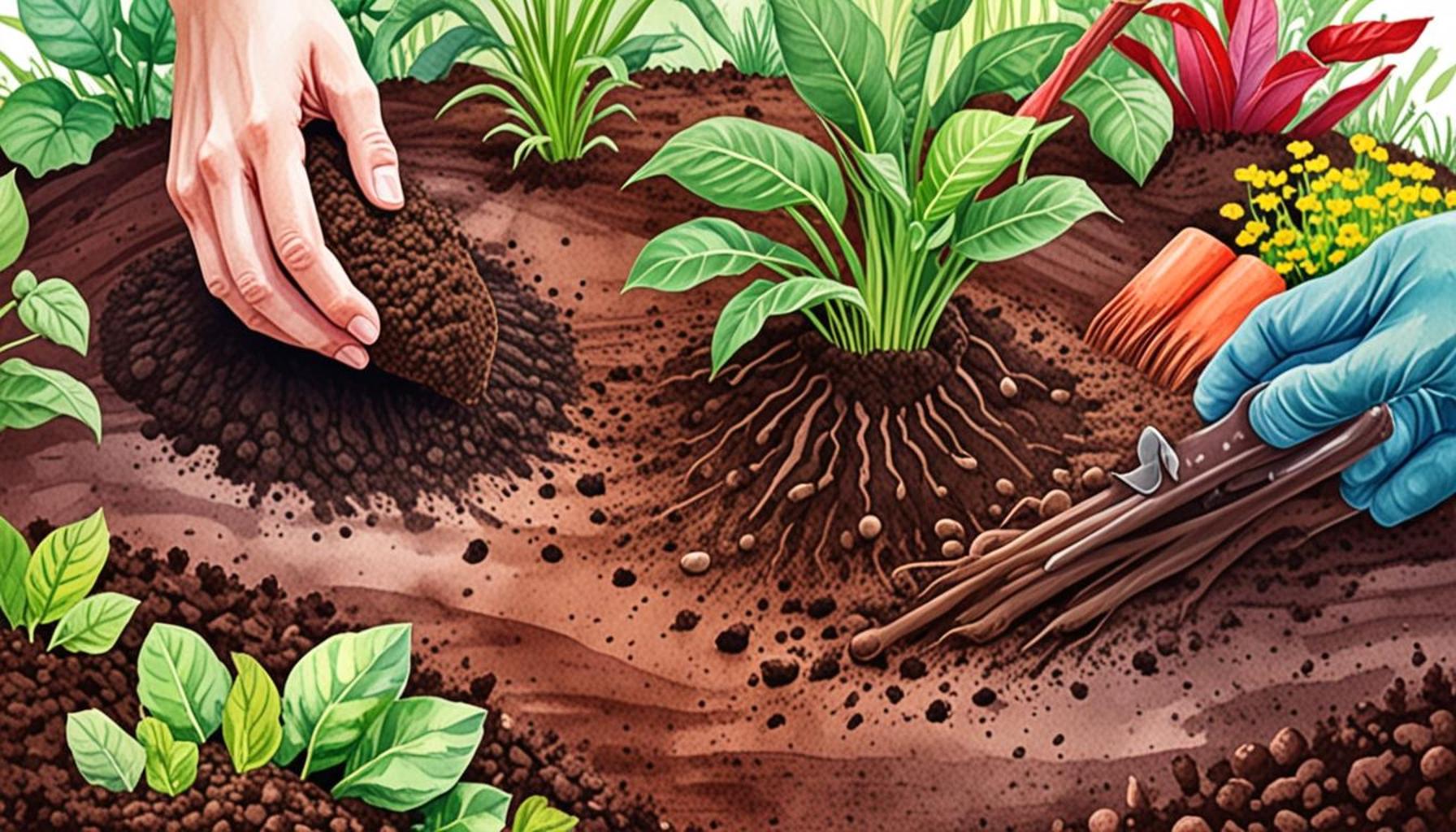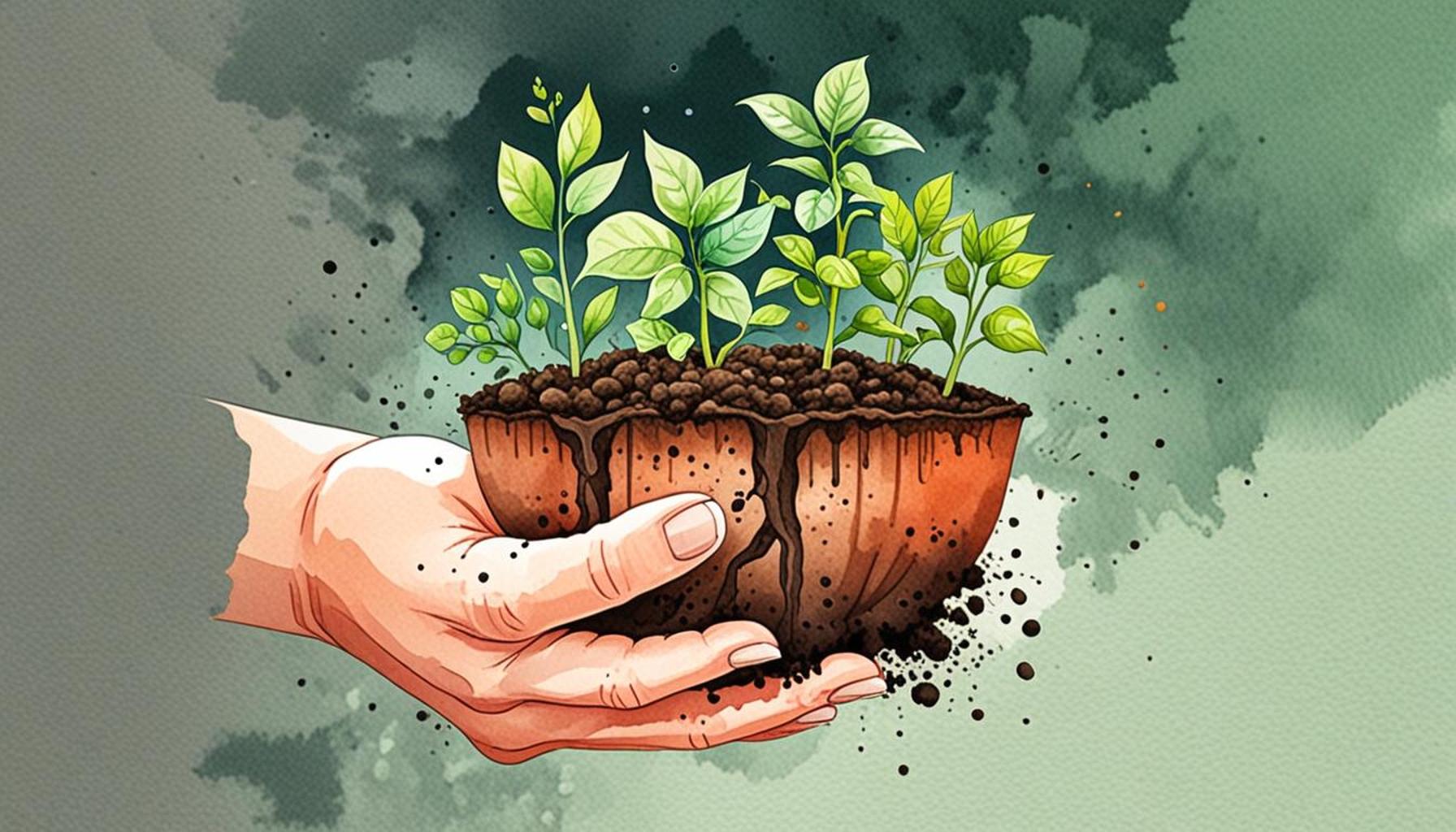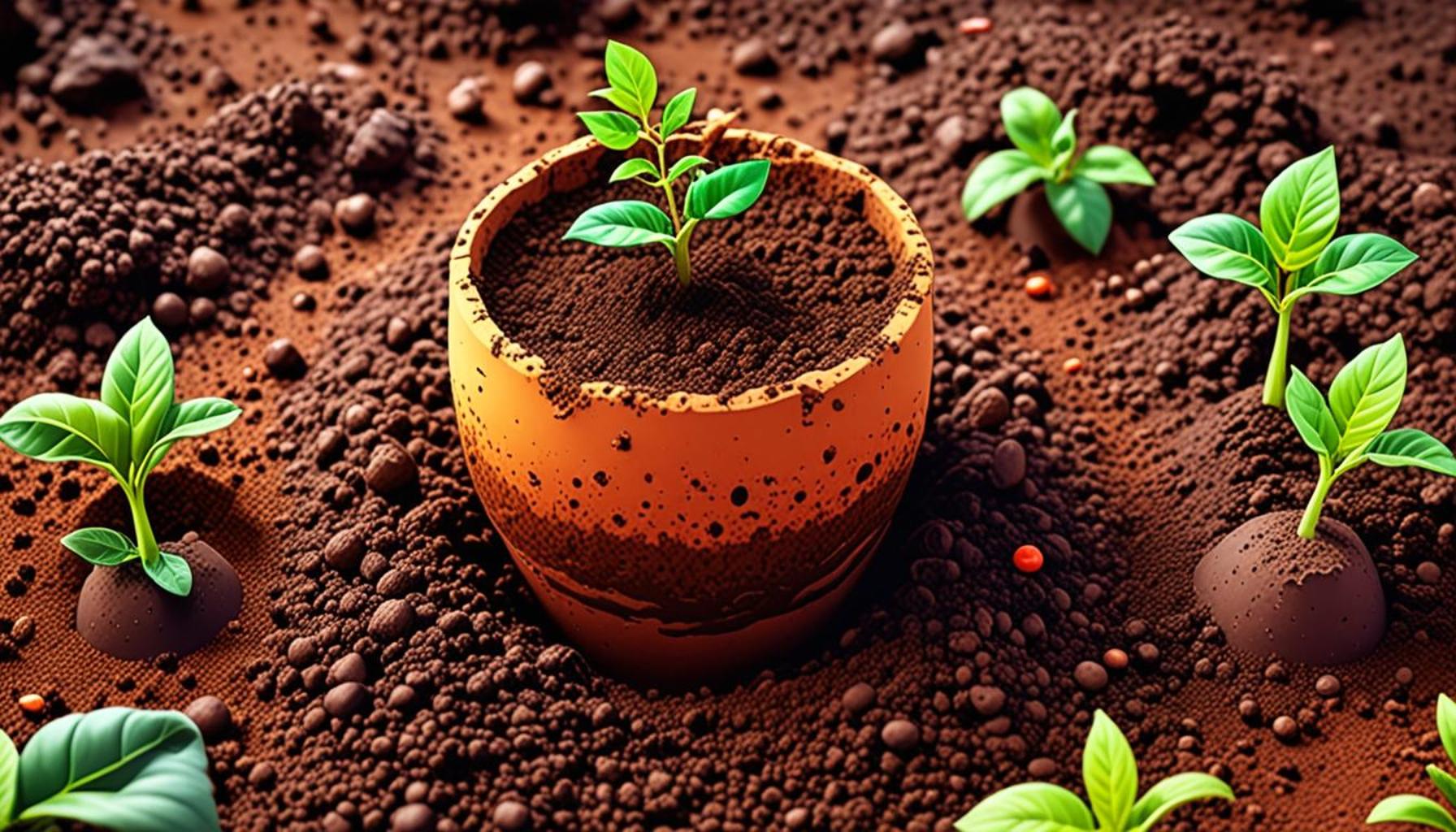Basic Principles of Soil Structure and Its Relevance for Beginner Gardening

Understanding Soil Structure: A Gardener’s Foundation
Soil is more than just dirt; it is a complex ecosystem that plays a vital role in successful gardening. For beginners, comprehending the basic principles of soil structure is essential for cultivating healthy plants. With the right soil, gardeners can improve their yield and enjoy a vibrant garden.
What Makes Up Soil Structure?
At its core, soil structure refers to the arrangement of soil particles and the spaces in between them, known as pore spaces. This organization influences several factors critical for plant growth, including:
- Water drainage: Well-structured soil allows excess water to flow right through while retaining sufficient moisture for plant roots. For instance, clay soils often become compacted and waterlogged, leading to root rot, while sandy soils drain quickly, which may dry out plants too soon.
- Nutrient availability: The ideal soil structure promotes nutrient retention within the soil, making them accessible to plants. Loamy soil, which consists of a balanced mix of sand, silt, and clay, is often hailed as the ‘gold standard’ for gardeners due to its excellent nutrient-holding capacity and drainage properties.
- Air circulation: Proper aeration is essential for root respiration. Soil that is overly dense can become anaerobic, leading to unhealthy plant growth. A well-aerated soil structure allows oxygen to reach the roots effectively, promoting healthier, more vigorous plants.
Why is Soil Structure Important for Beginners?
As a novice gardener, understanding these differences can make a significant impact on your garden’s success. Here are some compelling reasons to prioritize soil structure:
- Better plant establishment: Young plants with strong root systems tend to thrive better in good soil structure. For example, ample space for roots to expand can lead to sturdier plants that are less prone to diseases.
- Increased resilience: Healthy soil with good structure is not only effective in supporting plant growth but also displays increased resilience against extreme weather conditions like drought and heavy rain. This quality is vital in regions that experience unpredictable climate changes.
- Sustainable gardening: Understanding soil composition and structure promotes eco-friendly practices. Beginners can learn to amend and enhance soil quality through organic means, reducing the need for artificial fertilizers and pesticides, which can harm the environment.
Exploring the foundation of soil structure not only enhances your gardening experience but also helps you grow a more resilient and productive garden. By learning about soil health, composting, and the importance of native materials, you can create an optimal gardening environment that nurtures growth throughout any season. Embark on this journey of discovery to unlock the secrets of your soil, and in doing so, elevate your gardening skills to new heights!
DISCOVER MORE: Click here to enhance your gardening skills!
Key Components of Soil Structure
To truly understand soil structure, one must first grasp its primary components: soil particles, organic matter, air, and water. The interplay of these elements results in a variety of soil structures that can significantly affect a gardener’s efforts. Let’s delve deeper into these essential components.
Soil Particles: The Building Blocks
Soil is composed primarily of three types of particles: sand, silt, and clay. Each type plays a unique role in shaping soil structure:
- Sand: These are large particles that provide excellent drainage and airflow; however, they hold minimal nutrients and moisture. Sandy soils are often warm, making them conducive for early-season planting.
- Silt: Finer than sand but coarser than clay, silt particles retain moisture better and supply more nutrients. This combination makes silt a valuable component in achieving an optimal soil blend.
- Clay: Known for its tiny particles, clay has powerful water-holding capabilities but can create dense soil that resists air flow. This can lead to challenges such as root rot in some plants. Understanding the percentages of these particles in your soil will help in modifying it for better garden performance.
Organic Matter: The Nutrient Reservoir
Another crucial element that influences soil structure is organic matter. Compost, decaying plant material, and other forms of organic input play an essential role in creating a high-quality soil structure. These materials improve soil tilth, enhance moisture retention, and foster beneficial microbial activity. For beginner gardeners, learning about the different ways to add organic matter is vital. Options include:
- Composting: Creating a compost pile of kitchen scraps and yard waste enhances soil richness over time.
- Mulching: Layering organic materials on the soil surface can help retain moisture and suppress weeds.
- Crop rotation: Planting diverse crops in succession improves soil fertility and structure, breaking cycles of disease or nutrient depletion.
Aeration and Water Infiltration
The spaces between soil particles, known as pores, are essential for the movement of water and air. Healthy soil should have a balance of macropores (larger spaces for drainage and root growth) and micropores (smaller spaces that hold moisture). Proper soil aeration is key to ensuring that plants receive adequate oxygen, a factor necessary for root respiration. Compacted soils can hinder this process, making it crucial for beginners to recognize signs of compaction and take corrective measures.
Understanding these key components of soil structure equips novice gardeners with the knowledge to create optimal growing conditions. By mastering the basics, they can nurture a thriving garden environment where plants can flourish. In the following sections, we will explore how soil testing and the implementation of amendments can further enhance soil quality, solidifying an even stronger foundation for a successful gardening journey.
Understanding Soil Composition and Structure
For novice gardeners, recognizing soil composition is critical in successfully cultivating plants. Soil is not just dirt; it is a complex mix of minerals, organic matter, water, and air. Each component plays a significant role in plant health. The minerals provide essential nutrients, while organic matter enhances soil structure, improving its capacity to retain moisture and nutrients.
Types of Soil Structure
Soil structure can vary widely, affecting how water and air circulate within it. The four main types of soil structures include:
- Granular Structure: Commonly found in topsoil, this loose structure promotes air circulation and root penetration.
- Blocky Structure: Characteristic of subsoil, this structure creates larger pores that allow for better drainage.
- Platy Structure: Usually resulting from compaction, it can hinder water movement and root growth.
- Massive Structure: Lacking any defined structure, it can be detrimental to plant growth due to poor aeration.
Beginner gardeners should aim at understanding these types as they directly influence crop yield and plant resilience. Proper soil structure can drastically improve the gardening experience by facilitating healthy plant growth and reducing the risk of disease.
Importance of Soil Fertility
A soil’s fertility, determined by its nutrient content, is one of the essential aspects that aspiring gardeners must consider. Regular soil testing can provide insights into the specific nutrient requirements needed for diverse plants. By fostering nutrient-rich soil through organic matter additions like compost or well-rotted manure, beginners can establish a thriving garden environment. Balancing your soil’s pH can also revolutionize plant growth, as many plants have specific pH preferences for optimal nutrient uptake.
| Soil Component | Importance in Gardening |
|---|---|
| Minerals | Provide essential nutrients for plant growth |
| Organic Matter | Enhances soil structure and nutrient retention |
| Water | Essential for plant survival and nutrient transport |
| Air | Crucial for root respiration and microbial activity |
Engaging in soil management is not just beneficial; it’s a necessary skill for anyone interested in gardening. By consistently monitoring and adjusting soil conditions, beginner gardeners will be well on their way to cultivating healthy plants, making gardening a rewarding pursuit.
LEARN MORE: Click here to discover how to attract natural pest predators at home
Understanding Soil pH and Nutrients
Another critical aspect of soil structure is the pH level, which influences nutrient availability to plants. Soil pH is measured on a scale that ranges from 0 to 14, with 7 being neutral. Most plants thrive in slightly acidic to neutral soils, typically with a pH between 6.0 and 7.0. Each type of vegetable or plant may have its own pH preferences, so understanding the specific needs of your garden plants is imperative.
Testing your soil pH can be easily accomplished with a home testing kit or through local extension services, a resource available in many areas of the United States. If your soil is too acidic, amendments such as lime can help raise the pH. Conversely, if alkalinity is an issue, adding sulfur can lower it. These adjustments can dramatically improve plant health and yield, highlighting the importance of pH balance in a thriving garden.
Nutrient Management: The Role of Macronutrients and Micronutrients
Soil structure is not solely about the physical space where roots grow; it’s also fundamentally about the nutrients available within that space. The soil acts as a reservoir for critical nutrients that plants need to thrive, including macronutrients like nitrogen, phosphorus, and potassium, as well as micronutrients like iron, magnesium, and calcium.
It’s vital for beginner gardeners to understand how soil structure impacts nutrient retention and availability. For instance, clay soils hold nutrients well due to their high surface area but can also lead to nutrient imbalances. Sandy soils, although excellent for drainage, may require more frequent fertilization since nutrients can easily be washed away. Regular soil testing helps gardeners identify which nutrients may be lacking and whether amendments such as organic fertilizers or bone meal are necessary for optimal growth.
Soil Amendments and Enrichment Techniques
Improving soil structure and fertility typically involves the use of amendments. These enhancements can dramatically affect water retention, nutrient availability, and overall soil health. Here are a few methods beginner gardeners should consider:
- Adding Compost: As previously mentioned, compost not only enriches soil fertility but also improves its structure by increasing organic matter.
- Incorporating Cover Crops: Planting cover crops during the offseason, such as clover or rye, can prevent soil erosion, suppress weeds, and enhance nutrient cycling.
- Using Organic Mulches: Organic mulches, such as straw or wood chips, help retain moisture and improve soil structure as they break down, adding nutrients back into the soil.
Understanding the necessary amendments and their specific effects can empower gardeners, making soil a productive and nurturing environment for plants. By adopting these practices, novice gardeners will not only enhance soil structure but will create a dynamic ecosystem that promotes healthy growth.
The journey into gardening does not end with knowledge about soil components; the ongoing process of nurturing soil through careful management and amendments plays a fundamental role in achieving a flourishing garden. So, let’s turn our attention to the ways that soil testing and specific amendments can lay the groundwork for success in your botanical endeavors.
DIVE DEEPER: Click here to learn more
Conclusion: Embracing Soil Structure for Gardening Success
In conclusion, understanding the basic principles of soil structure is not just beneficial but essential for beginner gardeners seeking to cultivate a thriving garden. With soil being the foundation of plant health, recognizing how its composition, texture, and nutrients interact can significantly influence your gardening journey. By leveraging knowledge about soil pH, nutrient management, and the role of amendments, new gardeners can create an optimal environment for growth.
The correlation between soil health and plant vitality cannot be overstated. As you dive deeper into gardening, regular soil testing will be your ally, empowering you to make informed amendments that cater to the specific needs of your plants. Incorporating compost, utilizing cover crops, and applying organic mulches are practical steps towards enhancing soil structure and fertility, ultimately ensuring a rich harvest.
As you embark on this rewarding journey, keep in mind that successful gardening is a continuous learning process. Observing how your plants respond to various soil conditions will provide invaluable insights into best practices tailored specifically for your garden. By embracing these fundamental principles, you position yourself not only to grow stronger plants but also to foster a deeper connection with the earth. In essence, as you nurture your soil, you embrace the very foundation of successful gardening—creating a flourishing ecosystem right in your backyard. Take the next step, and let your garden thrive!


